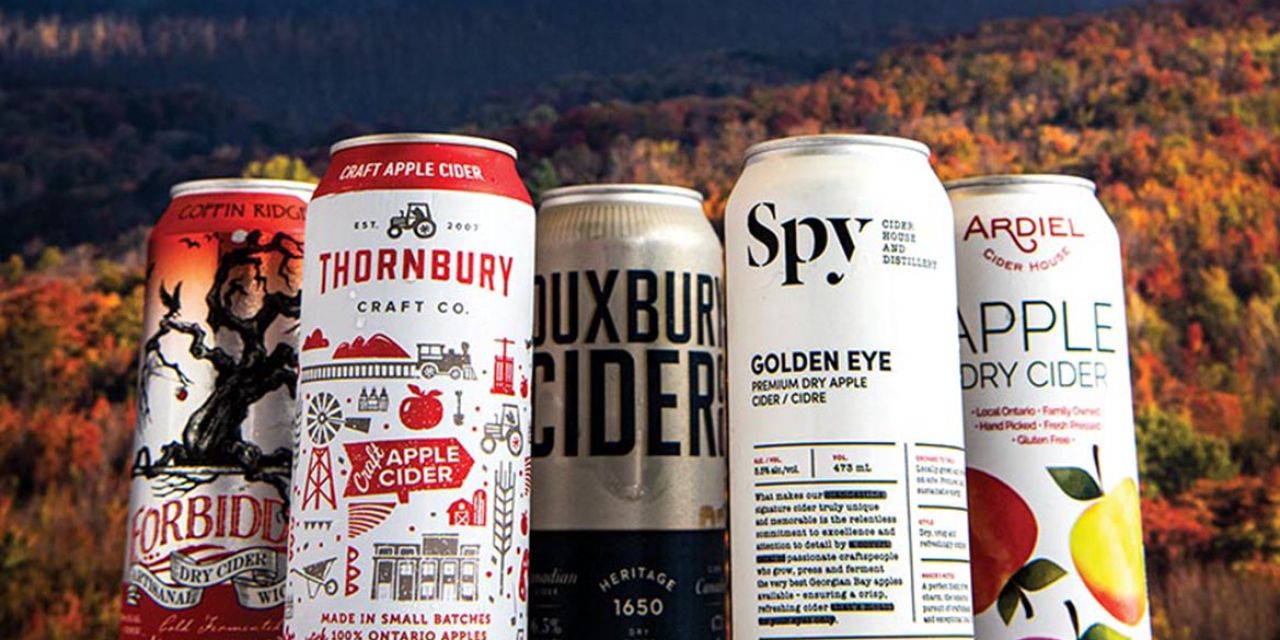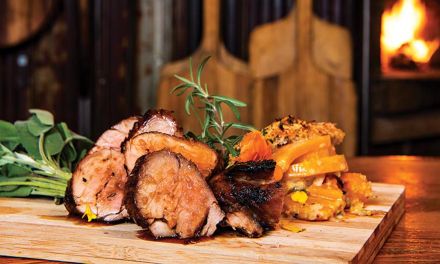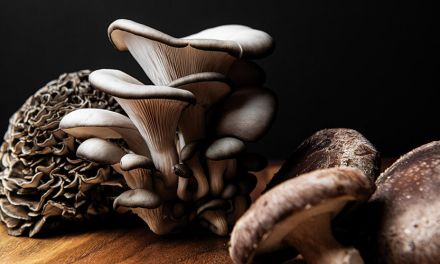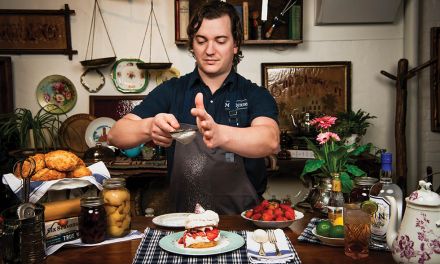A scenic view from the Ontario Parks-built viewing platform overlooking Devil’s Glen Country Club.
Golden Age of Cider
by Marcia Masino | photography by Clay Dolan
Ontario’s cider industry is experiencing a vibrant resurgence, blending ancient apple varieties with modern craftsmanship. From orchards to artisanal cideries, this golden age of cider is transforming the agricultural landscape and capturing the palates of a new generation.
You may enjoy your apple cider refreshingly cool or warm and invitingly scented with a cinnamon stick twist. Either way, it tastes like paradise in a glass. The word “paradise” comes from the ancient Persian language and literally means “orchard” or “stand of trees.” Ask any pomologist. A professional pomologist (a botanist who studies fruit and nuts) can tell you about the apple cultivation side of the long history of cider. The ideal cider apple differs from the eating apples we know, and although apple cider has been made from them for centuries, they were really grown for sweet culinary use. Old World heirloom apple varieties, which are sour, acidic, and tannic—often known as crab apples—are often mixed into the familiar popular ciders to add tartness. Now, researchers are seeking, sourcing, and propagating ancient tart types. Over the past seven years, scientists at the University of Guelph have been working on cultivating the original apples and developing new ones specifically for hard cider. This means a potential bushel full of promising new flavours awaits cider connoisseurs, especially since craft cideries are steaming hot.
With glowing descriptive words like rise, revival, revolution, resurgence, and renaissance, it is clear that apple cider, whether soft or hard, is the newest Ontario beverage to experience major growth. Ontario cider is truly a 100% Ontario agricultural product, with the province growing some of the best quality apples in the world. South Georgian Bay is the apple capital of Ontario, with a unique micro-climate, and along with southern Ontario, the cidery revival is in full bloom.
Culinary tourists are enjoying the cider renaissance, driven by an interest in local food and a desire for craft drinks. The Ontario Craft Cider Association (OCCA) proclaims that the craft cideries of Ontario have “extremely favourable trends.” Their website is full of promising data: “Cider sales throughout Canada have steadily increased over 2020–2021 to $299 million in revenues, an increase of 1.7%.” The success story involves a goal: “OCCA’s 2030 goal of 30 million litres will result in $115 million in GDP and many new jobs in the regions.”

The small-batch makers at the core of the twenty-first century revival focus on craftsmanship and uniqueness when it comes to specialized cider making. New artisanal ciders come in a dizzying array of types: dry, sweet, still (wine-like), sparkling, regional, organic, botanical, wood-aged, sour, ice, ros., and hopped, as well as varied alcohol contents from 0% and up. The flavours you may find on your cidery outing might include apple pear (pure pear cider is called “perry”), blackberry, cranberry, honeycrisp, spiced, and many more, including non-sugar.
Soft cider is made by pressing fresh apples to extract the juice, while hard cider is made by adding yeast to ferment the apple juice. The simple method is timeless. Bronze Age Europeans loved cider (it was safer to drink than water). The seeds journeyed with early settlers to North America, where they were planted, trees grew easily, orchards were created from grafts, and fruit was picked, fermented, and drunk. Cideries were as plentiful as the orchard trees that provided the apples.
Early settler cider wasn’t like the drink we associate with cooler temperatures and romantic fall moments in the red and gold autumn countryside. Its flavour didn’t evoke warm and fuzzy winter holidays either, except maybe for New Year’s because it was tart, dark, murky, and boozy—perhaps “fuzzy” does apply. Children were given a diluted version called “applekin”. Over time, tastes changed, and beer breweries took centre stage for several centuries, eclipsing the cideries.
I say “apple,” and you say “cider.” You say “apple,” and I say “apple cider doughnuts.” If you haven’t tried them, hunt for them when you visit the cider houses or participate in the new Collingwood Cider Trail this fall. These doughnuts are warm, lightly dusted with sugar, and have apple cider baked into them. It’s a must-taste.
The OCCA states that “craft cider is increasingly popular among younger generations, specifically female consumers, as well as international visitors to Canada.” Additionally, apple cider tasting is a family-friendly, multi-generational, fresh-air experiential outing opportunity. And what could be a happier couple’s date pairing than apples and cider? Especially since apples are symbolic of love and purity.
In almost every country, the apple is regarded as a sacred, magical, or holy fruit, a symbol of fruitfulness, a means to immortality. Did you know you’ll make a new friend if you share your apple with them? Most of all, apples are said to attract and protect prosperity. That’s great news for the already shining-with gold-medal-awards artisanal craft cider makers. It looks like the fortunes of Ontario cideries are golden. E







